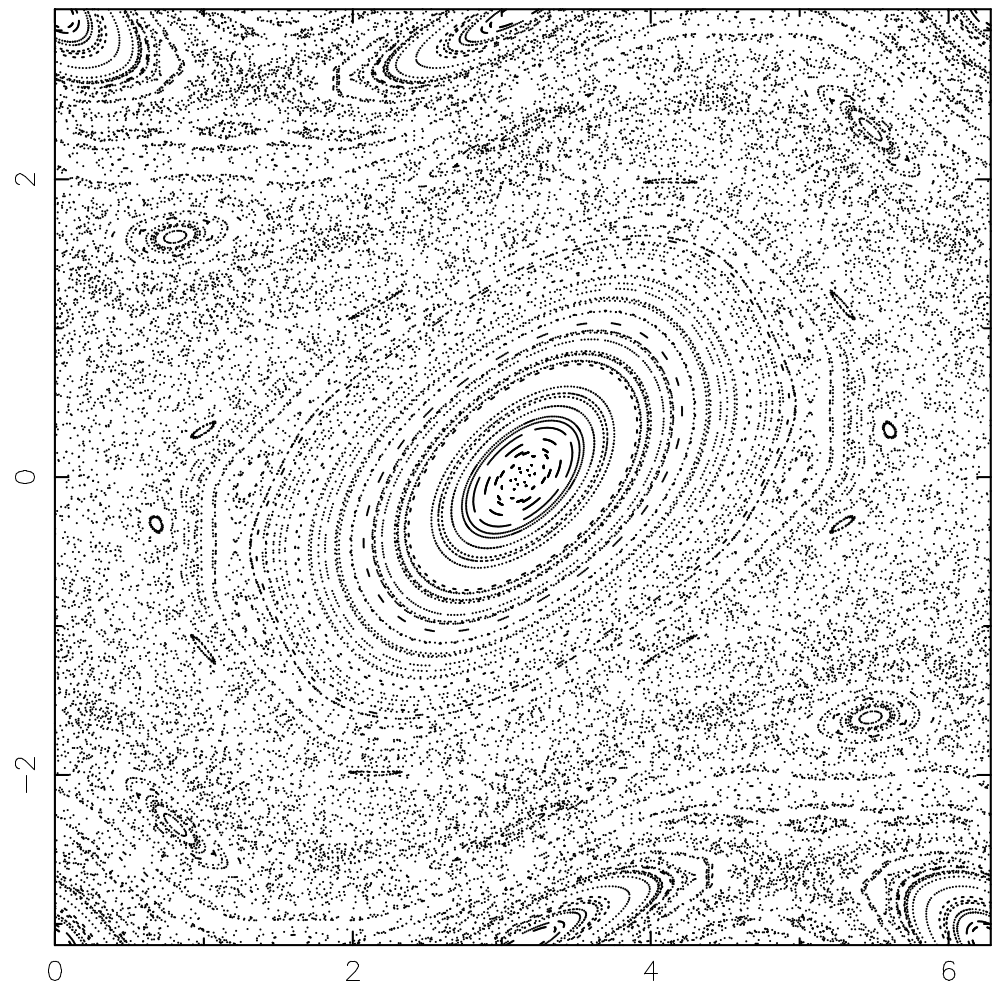|
|

|
|
|

|
A two-dimensional map also called the Taylor-Greene-Chirikov map in some of the older literature and defined by
|
(1)
| |||
|
(2)
| |||
|
(3)
|
where
and
are computed mod
and
is a positive constant. Surfaces
of section for various values of the constant
are illustrated above.
An analytic estimate of the width of the chaotic zone (Chirikov 1979) finds
|
(4)
|
Numerical experiments give and
. The value of
at which global chaos occurs has
been bounded by various authors. Greene's Method
is the most accurate method so far devised.
| author | bound | exact | approx. |
| Hermann | 0.029411764 | ||
| Celletti and Chierchia (1995) | 0.838 | ||
| Greene | - | 0.971635406 | |
| MacKay and Percival (1985) | 0.984375000 | ||
| Mather | 1.333333333 |
Fixed points are found by requiring that
|
(5)
| |||
|
(6)
|
The first gives ,
so
and
|
(7)
|
The second requirement gives
|
(8)
|
The fixed points are therefore and
. In order to perform a linear
stability analysis, take differentials of the variables
|
(9)
| |||
|
(10)
|
In matrix form,
|
(11)
|
The eigenvalues are found by solving the characteristic equation
|
(12)
|
so
|
(13)
|
|
(14)
|
For the fixed point ,
|
(15)
| |||
|
(16)
|
The fixed point will be stable if Here, that means
|
(17)
|
|
(18)
|
|
(19)
|
|
(20)
|
so . For the fixed
point (0, 0), the eigenvalues are
|
(21)
| |||
|
(22)
|
If the map is unstable for the larger eigenvalue, it is unstable. Therefore, examine . We have
|
(23)
|
so
|
(24)
|
|
(25)
|
But , so the second part of the inequality
cannot be true. Therefore, the map is unstable at the fixed
point (0, 0).